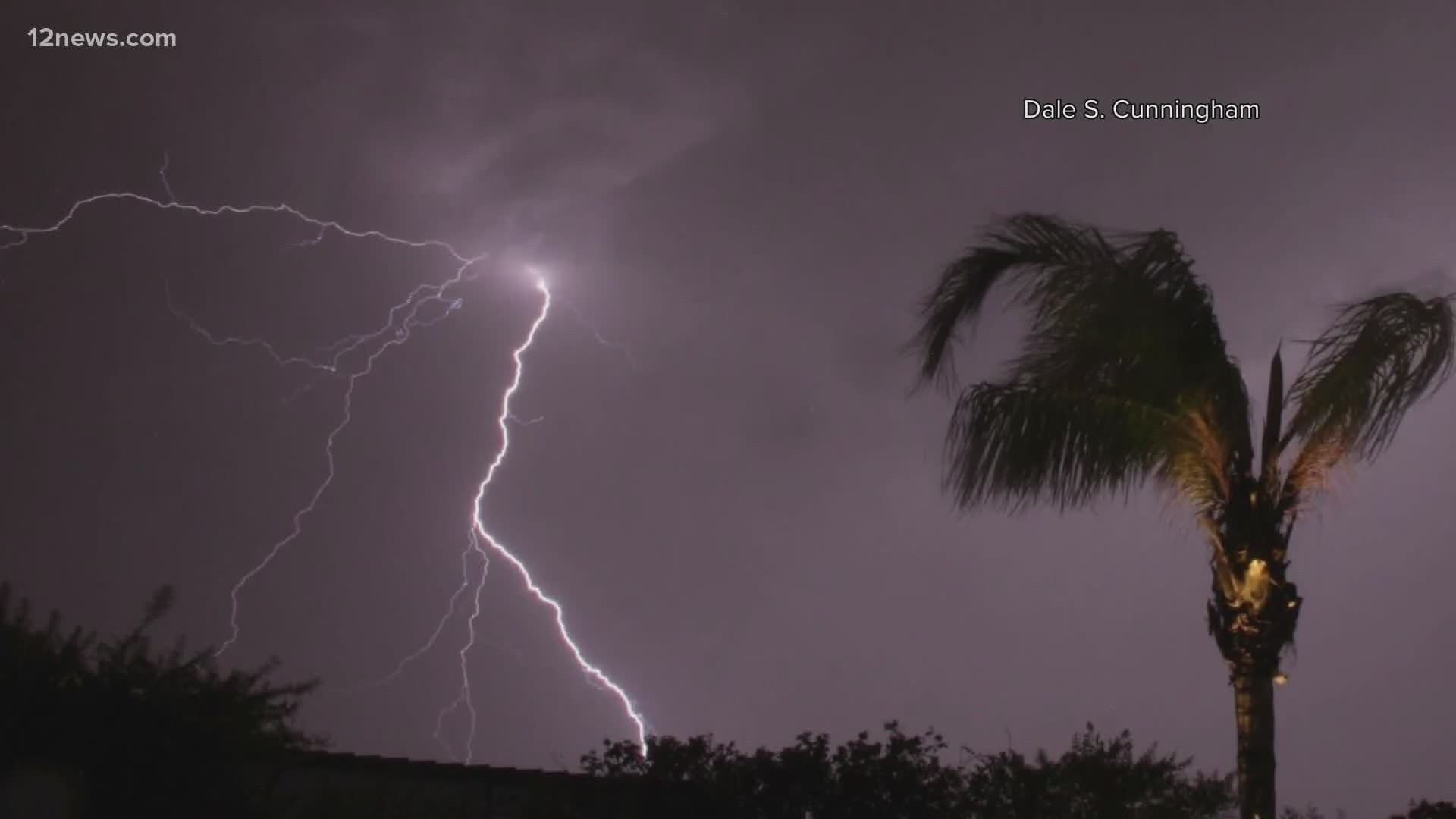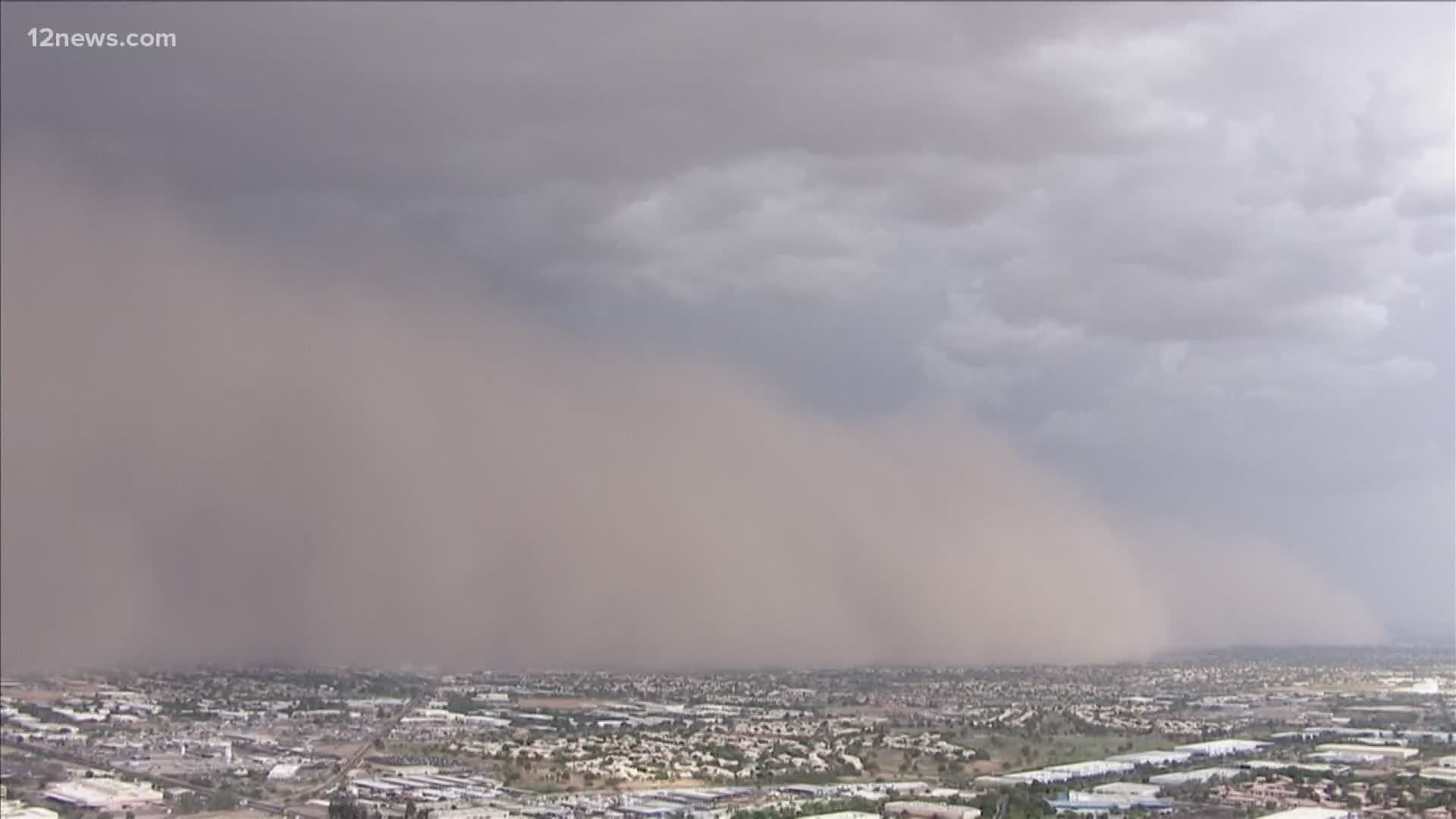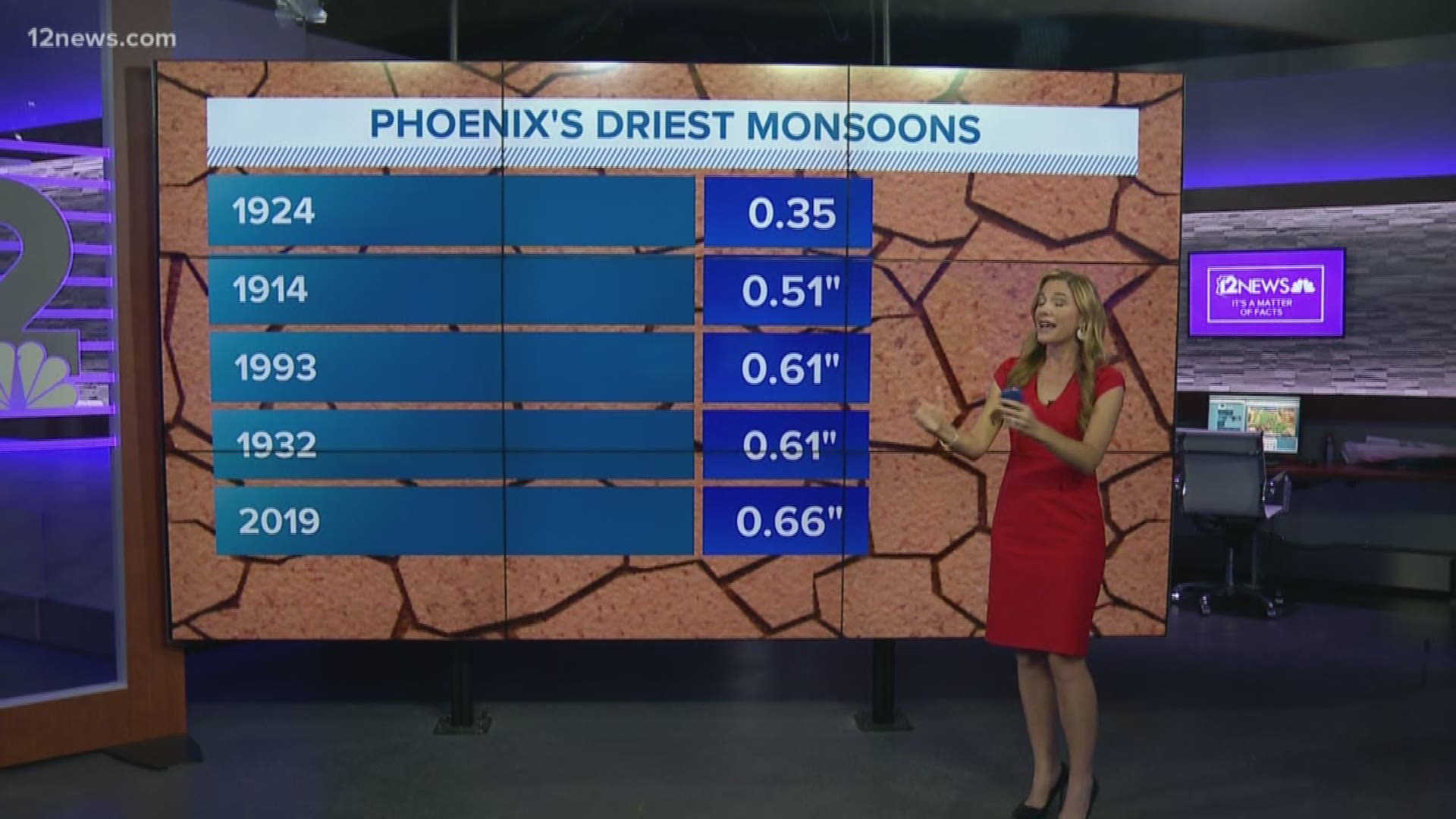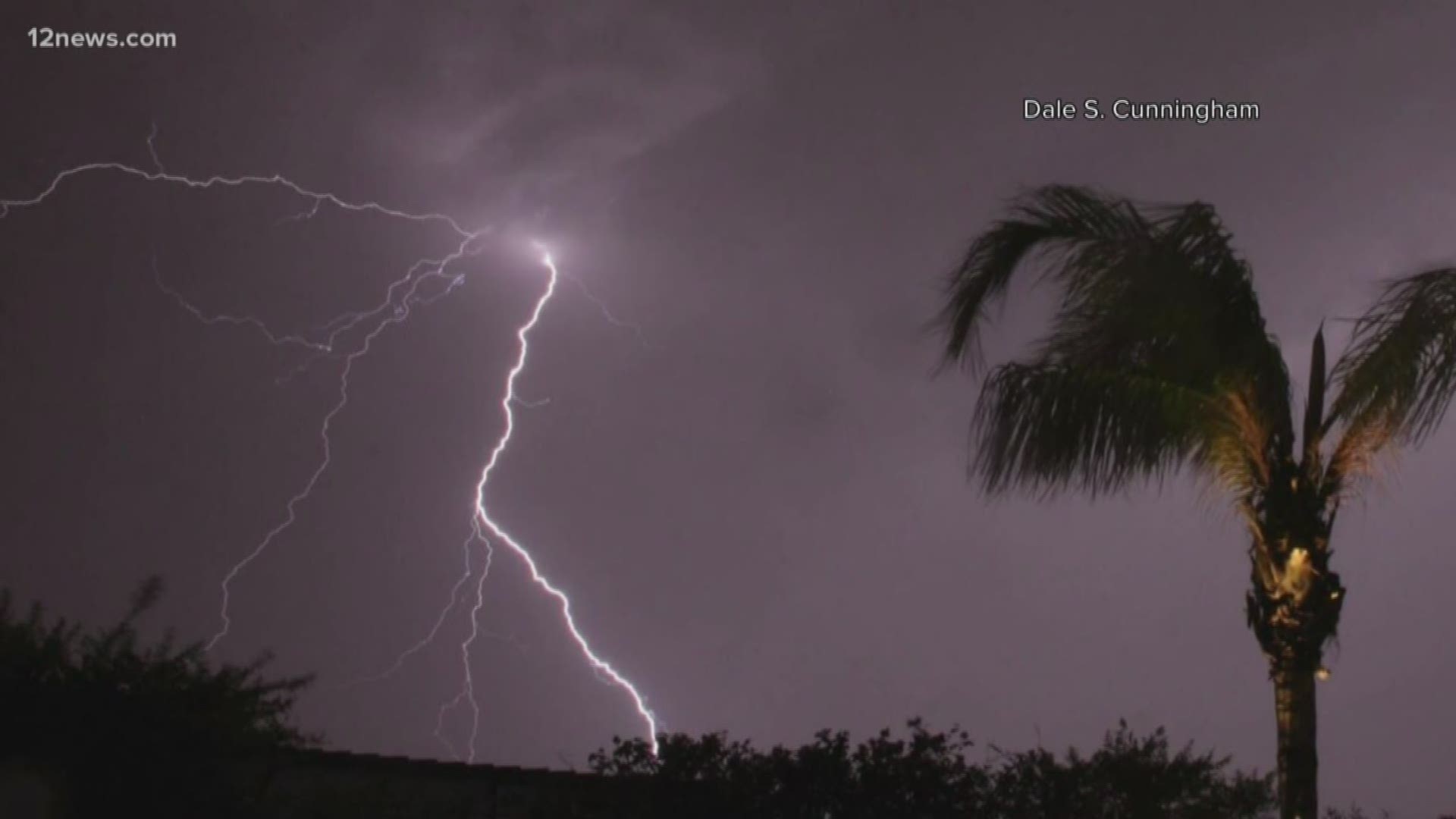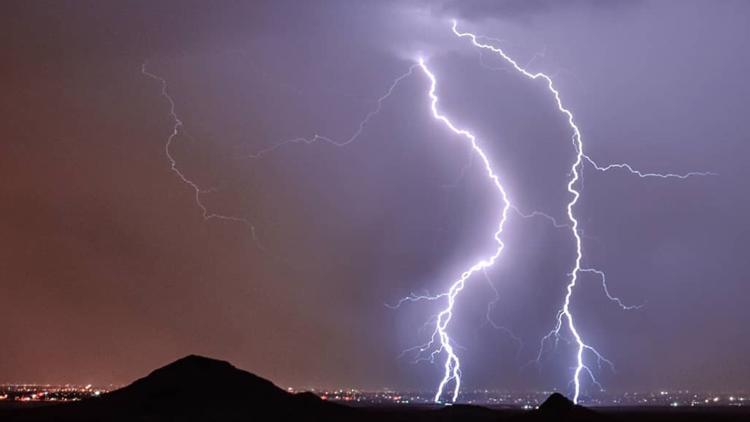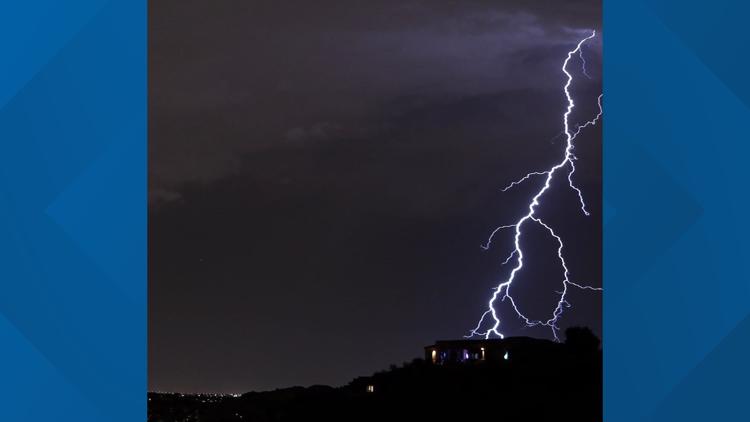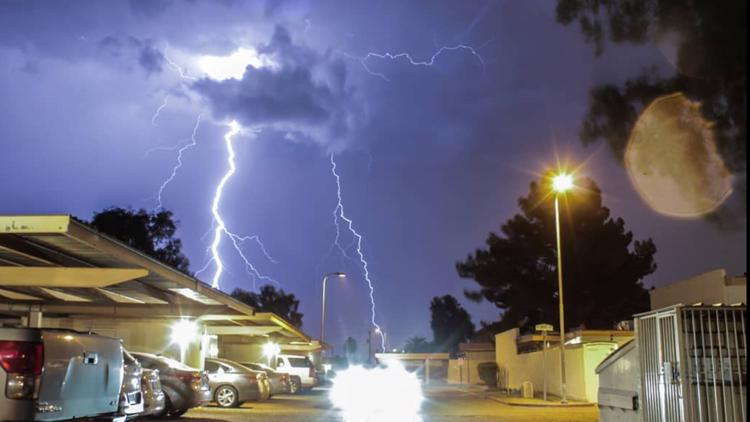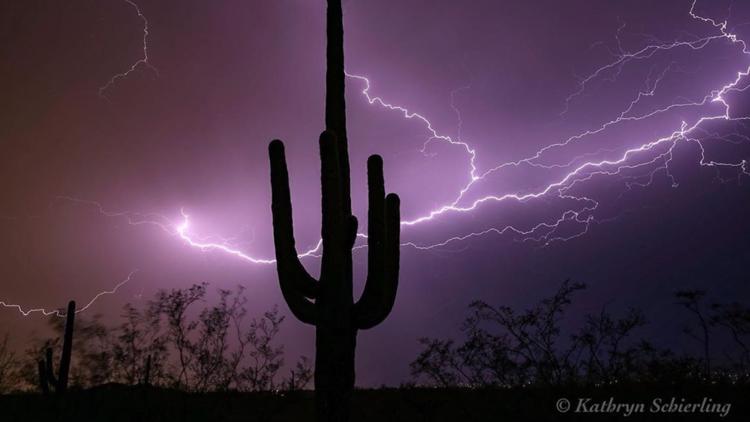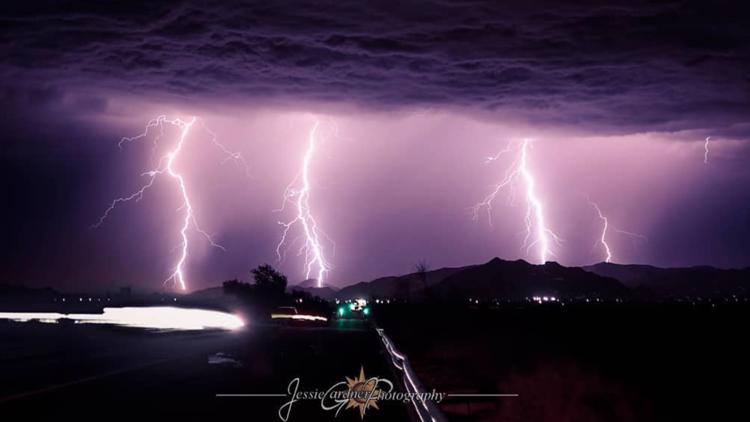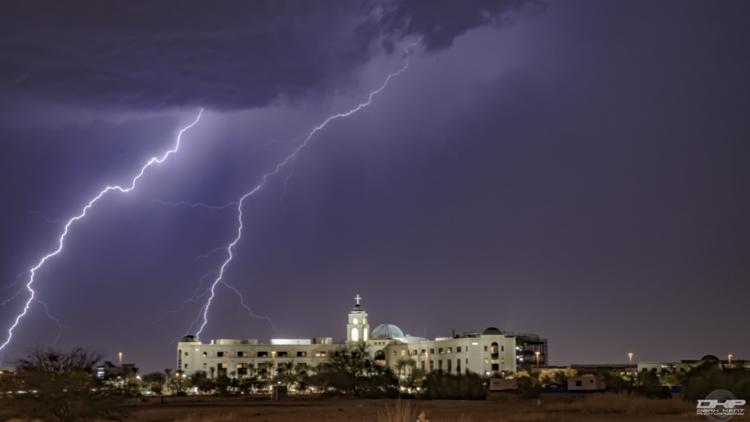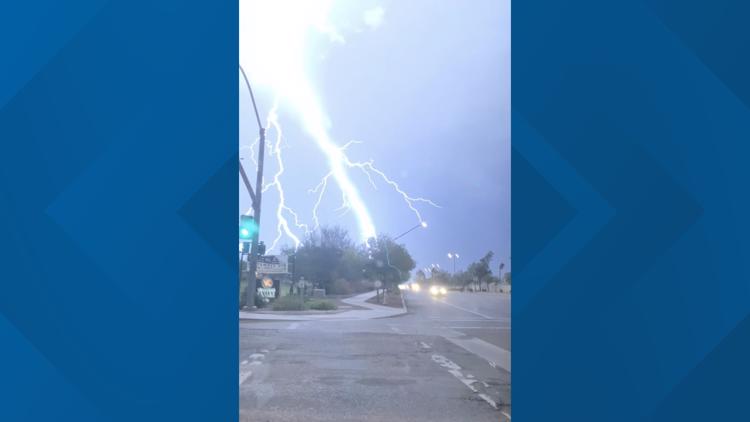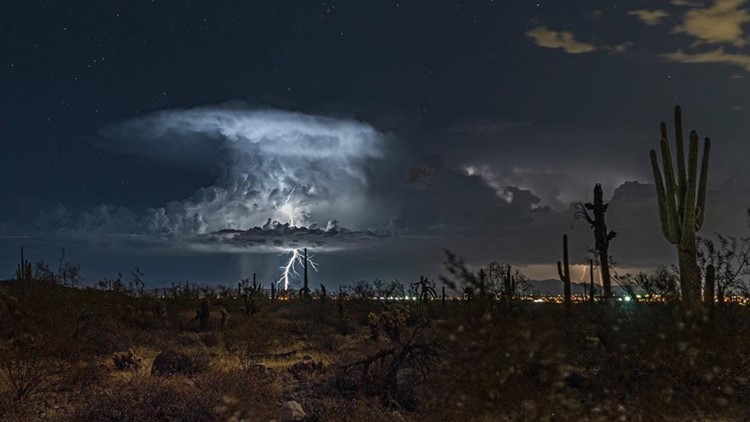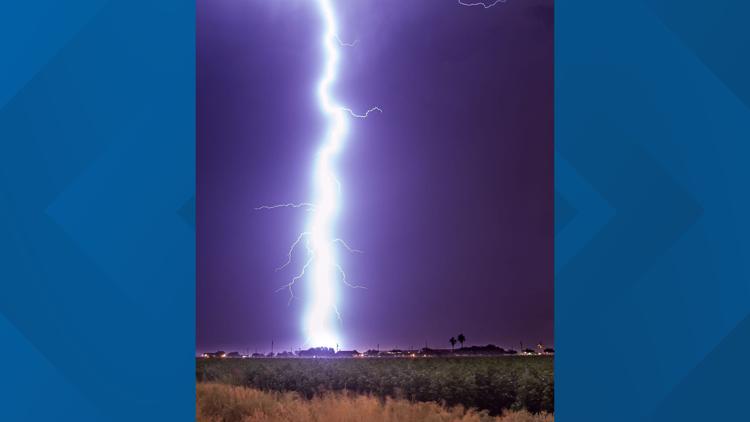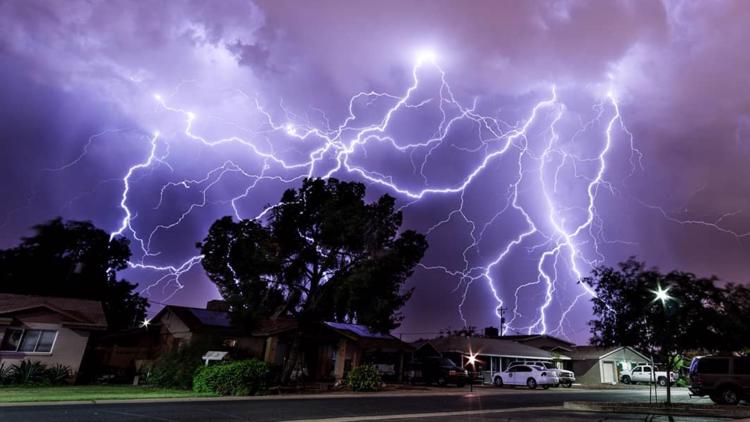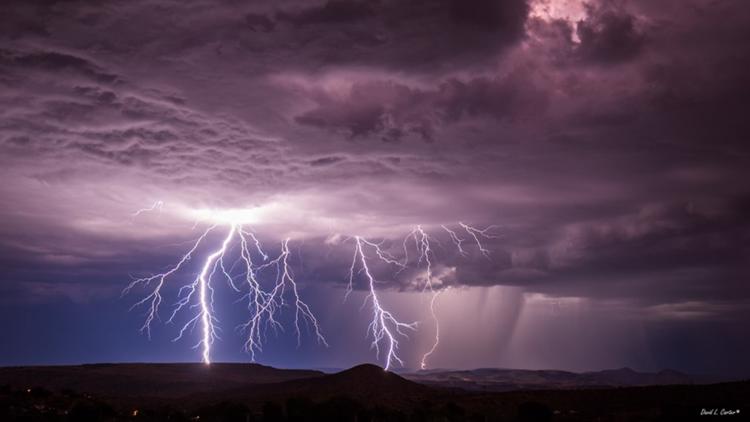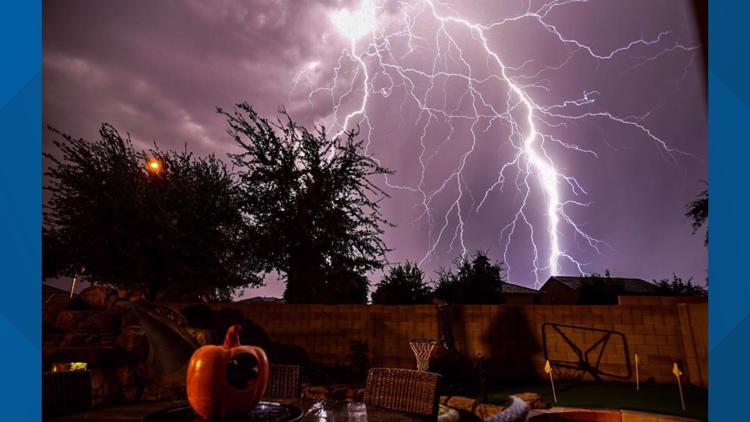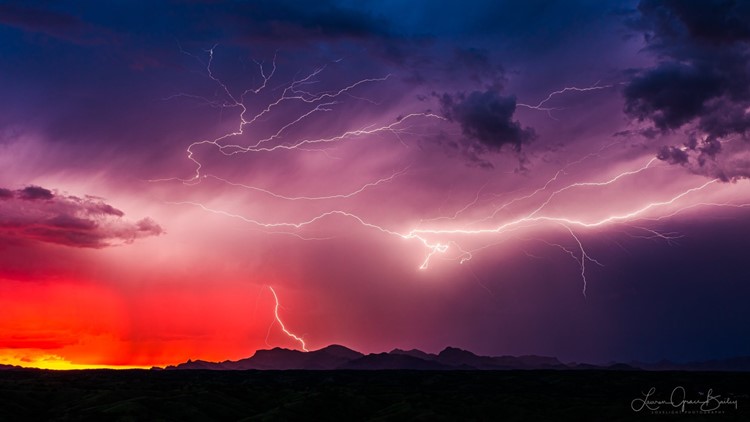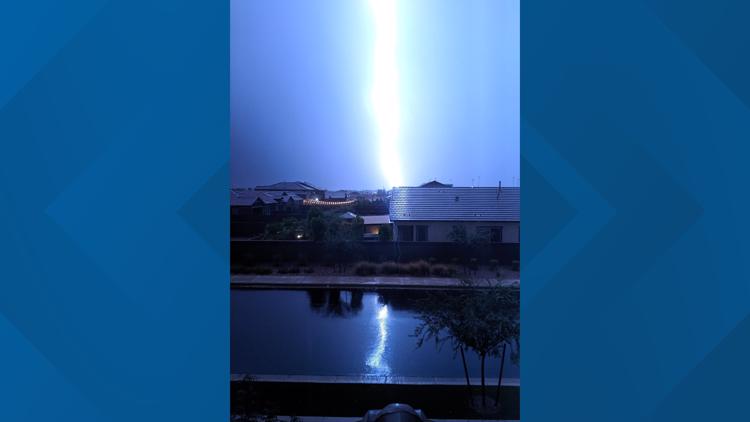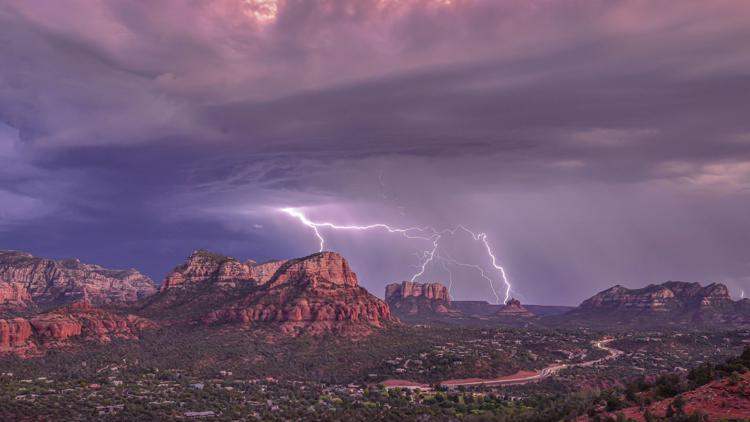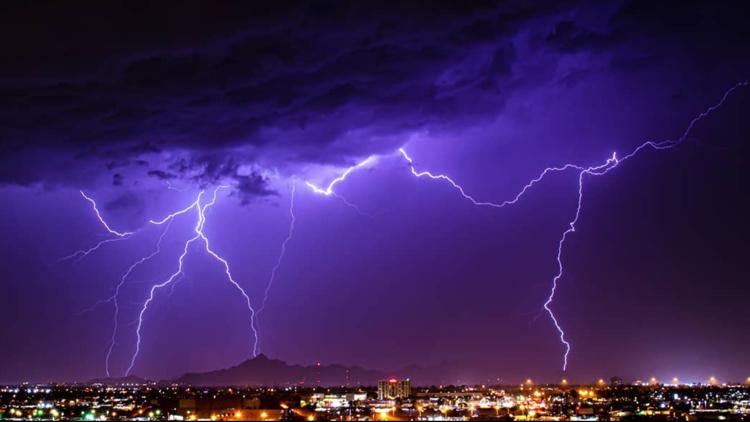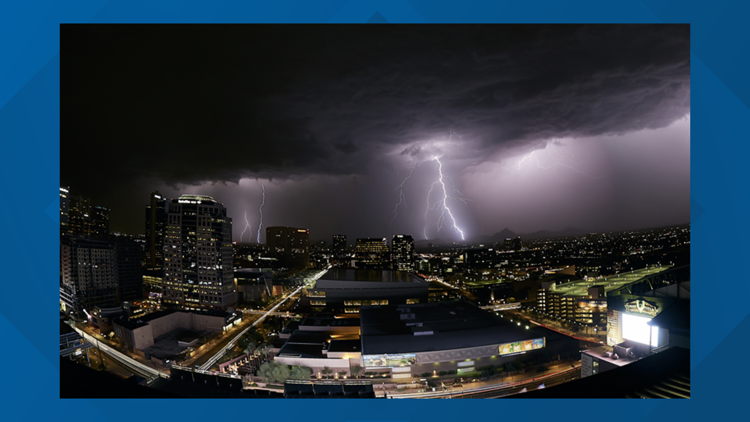PHOENIX — This year's monsoon officially kicks off Monday.
The monsoon officially runs from June 15 to Sept. 30.
Here is everything you need to know about the monsoon in Arizona, according to the National Weather Service.
What is the monsoon?
The monsoon is a series of large-scale wind shifts that transport moist tropical air to dry desert locations, such as the southwestern United States.
It blows from the southwest between May and September and brings rain, or from the northeast between October and April. The monsoon is not each individual storm, but rather a large-scale weather pattern that causes these thunderstorms.
What causes the monsoon?
The wind shifts occur because of intense heating of the land over Mexico and the southwestern United States, according to the National Weather Service. The weather service said heating in the early summer months creates the wind shifts in the low levels.
Moisture begins to be carried off of the Gulf of California and eastern Pacific Ocean (the two main sources for monsoonal moisture in northern Arizona), according to the National Weather Service.
The weather service said the these winds transport moisture northward into Mexico and the southwest United States.
Another key component of monsoon development is in the upper levels of the atmosphere, according to the National Weather Service. The weather service said a strong subtropical ridge of high pressure is located over Mexico during June which acts to block moisture flow toward the north.
This is why northern Arizona normally sees some of the hottest and driest weather of the year during June, according to the National Weather Service.
But the weather service said from late June to early July, the ridge of high pressure shifts northward into the Southern Plains or Southern Rockies. The shifting ridge axis allows low- and mid-level moisture to move northward, according to the National Weather Service.
The weather service said the combination of the low-, mid- and upper-level moisture surge to the north culminates in the real beginning of the monsoon.
The combination of these atmospheric events are signs that forecasters watch for closely on long range model guidance leading up to the monsoon, according to the National Weather Service.

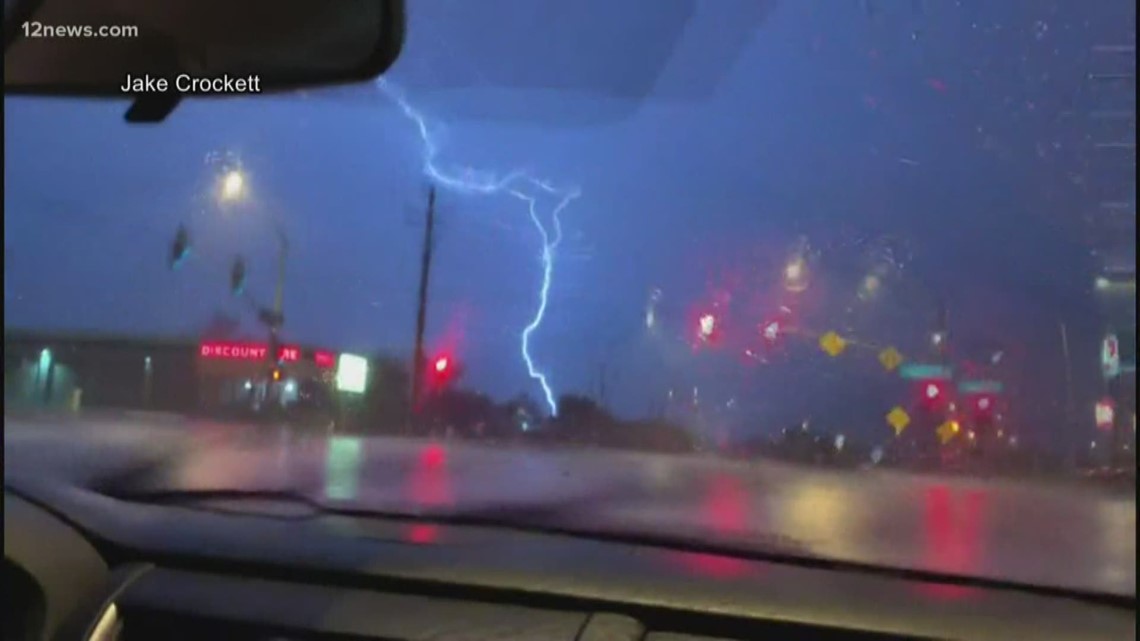
Will it rain in Arizona during the monsoon?
Unfortunately, not always.
Just because the monsoon stretches from June to September doesn't mean Arizona will see weather activity during that entire stretch of time. According to the National Weather Service, monsoonal moisture typically does not reach the region until the first week of July in northern Arizona.
Many factors throughout the spring and early summer influence when exactly it begins each year.
In northern Arizona, much of the area gets between 40 and 50% of its annual precipitation during the monsoon. Rainfall during these months is not continuous, but usually comes in the form of afternoon and evening thunderstorms.
The rain is especially important to help replenish reservoirs in northern Arizona, along with local farming in the area.
Do other parts of the world get a monsoon?
The monsoon also affects several other locations around the world, including Southeast Asia, Australia, Africa, and South America.
The Indian Monsoon is the strongest in the world due to the height of the Tibetan Plateau, according to the National Weather Service.
What did last year's monsoon in Arizona look like? In a word: Dry. In two words: Dry and uneventful. Many referred to monsoon 2019 as the "non-soon," that's how dry it was.
Phoenix saw its fifth-driest monsoon on record, with just 0.66 inches falling at Sky Harbor International Airport, where records are kept.
RELATED: Monsoon 2019 was one for the records
Typically Phoenix sees 33% of its annual rainfall during the monsoon, averaging 2.71 inches.
The driest monsoon ever was in 1924, when only 0.35 inches of rain fell.
FROM 2019:
What could this year's monsoon look like?
It's not looking so good, Arizona.
Team 12's Lindsay Riley said El Nino, La Nina and active Pacific hurricane years are the strongest predictors to determine what kind of monsoon Arizona will have.
Our strongest predictor for monsoon 2020 is that we’re expecting a below-average Pacific hurricane season, which has indicated below-average monsoon seasons in the past, but having just one strong predictor isn’t enough.
Based on reviewing data from the last 124 years and comparing that to years with wet winters and hot springs, Riley said her prediction is for the above-average temperatures to continue through the summer months and the drought to expand and worsen in northern Arizona.
She said it will also be an active fire season due to the abundance of fuel on the ground after our wet winter.
But there is not a strong correlation to years with wet winters and hot springs to the amount of precipitation we see during the monsoon.
Therefore, there is an equal chance of seeing above average versus below-average precipitation. The National Weather Service said each monsoon is different in almost every aspect.
Precipitation totals vary widely each monsoon season and within each season, amounts change quite dramatically from city to city.
RELATED: Monsoon 2020 predictions for Arizona
How can I stay safe during a storm?
Whether you are on the road or at home when a monsoon hits, there are plenty of ways to stay safe.
The Arizona Department of Transportation is working to educate drivers on how to stay safe if they find themselves caught in a storm with their "Pull Aside, Stay Alive" campaign.
Motorists traveling through a 10-mile stretch of Interstate 10 near Picacho Peak (between mileposts 209-219) should know that it is an area prone to sudden blowing dust.
If you encounter a dust storm, immediately check traffic around your vehicle (front, back and to the side) and begin slowing down.
Do not wait until poor visibility makes it difficult to safely pull off the roadway – do it as soon as possible. Completely exit the highway if you can.
Do not stop in a travel lane or in the emergency lane. Look for a safe place to pull completely off the paved portion of the roadway.
Turn off all vehicle lights. You do not want other vehicles, approaching from behind, to use your lights as a guide and possibly crash into your parked vehicle.
Set your emergency brake and take your foot off the brake.
Stay in the vehicle with your seat belt buckled and wait for the storm to pass.
Drivers of high-profile vehicles should be especially aware of changing weather conditions and reduce speeds.
Phoenix Fire spokesman Rob McDade said, “We tell everybody every year, please do not enter flooded roadways. But there we are every monsoon season with our folks rescuing people out of those flooded roadways.”
If and when people do get stranded in flood waters, Phoenix FIre is forced to deploy people into dangerous situations.
Their rescuing protocol is reach, throw, row, go, and if all else fails, helo, for send in the helicopter.
Dave Schmitt, who is the Phoenix Fire captain of a team sent to do water rescues, said, “We utilize that and our synch collar to go out and extract a victim, usually from their rooftop of their car.”
Monsoon level winds also whip up blinding dust on a moment’s notice.
Phoenix Police Sgt. Ann Justus said now is the time to make sure your windshield wipers and tires are good to go.
“What my mind goes back to is the Wizard of Oz, the twister,” Justus said.
“It’s a twister; it’s a twister. That’s kind of what it is like when you’re driving in one of those monsoons. It’s crazy. You can’t see.”
Before that wind comes, you are going to want to secure down backyard items like umbrellas and trampolines.
Arizona Public Service, or APS, said items like this were responsible for more than 120 power outages last monsoon season, because they have a metal frame and are conductive.
Scott Kahrs, an APS lineman, said, “I personally found a 15 foot trampoline hanging from our trees during a storm a couple years ago.”
And finally, APS has a drone team. They send drones up before a storm hits to check on any potential issues -- like trees hanging over powerlines -- and after to survey damage.
FROM 2019:

